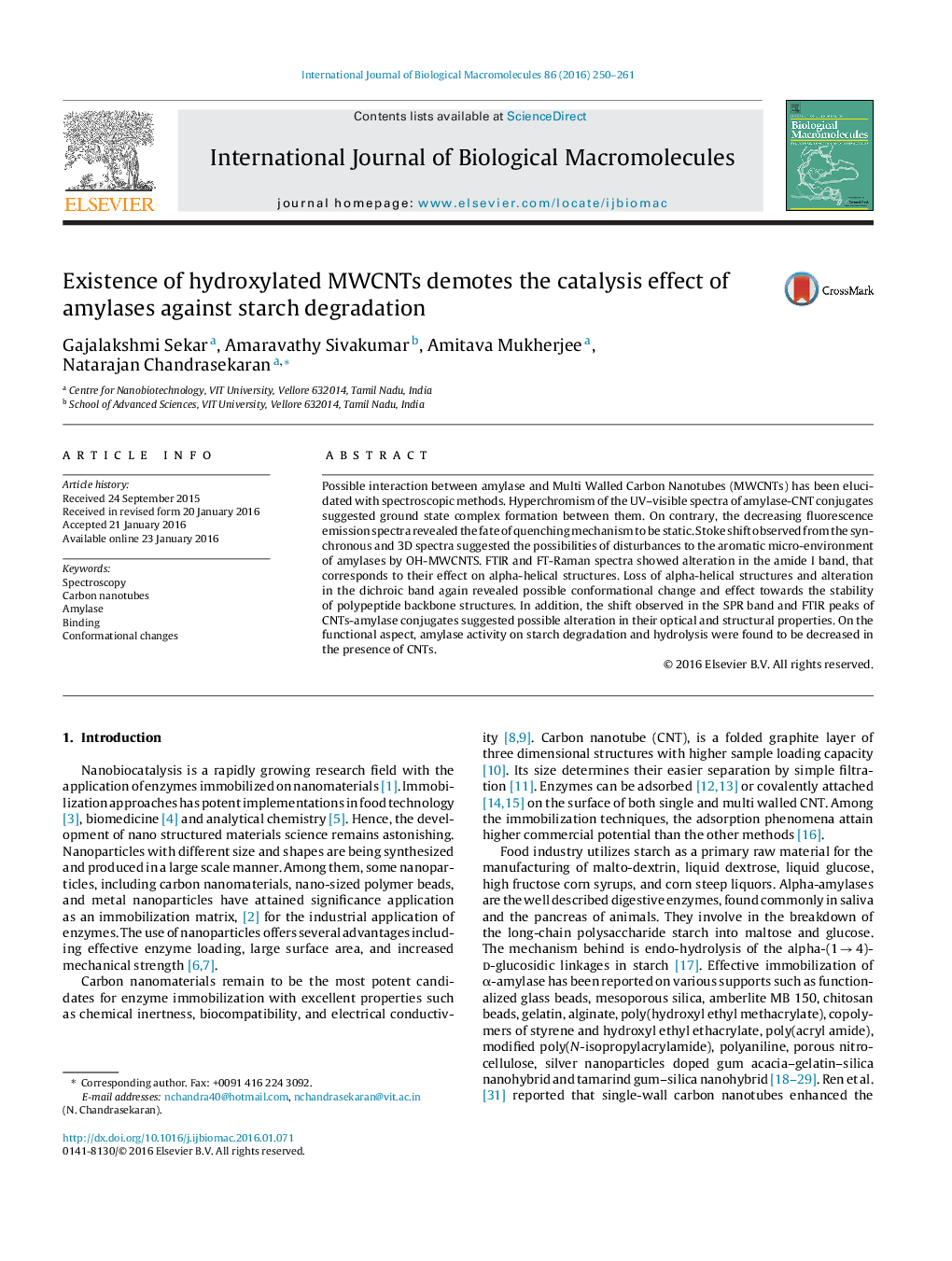| کد مقاله | کد نشریه | سال انتشار | مقاله انگلیسی | نسخه تمام متن |
|---|---|---|---|---|
| 1985900 | 1540234 | 2016 | 12 صفحه PDF | دانلود رایگان |

• UV–visible and fluorescence spectra confirmed the existence of ground state complex formation.
• Synchronous and 3D spectra evidenced possible disturbance to Trp residues.
• FTIR and FT-Raman showed alteration in the amide I band region.
• CD studies confirmed the loss of alpha-helical structures.
• Amylase could alter the optical and structural properties of CNTs.
• Enzyme activity of amylase decreased in the presence of CNTs
Possible interaction between amylase and Multi Walled Carbon Nanotubes (MWCNTs) has been elucidated with spectroscopic methods. Hyperchromism of the UV–visible spectra of amylase-CNT conjugates suggested ground state complex formation between them. On contrary, the decreasing fluorescence emission spectra revealed the fate of quenching mechanism to be static. Stoke shift observed from the synchronous and 3D spectra suggested the possibilities of disturbances to the aromatic micro-environment of amylases by OH-MWCNTS. FTIR and FT-Raman spectra showed alteration in the amide I band, that corresponds to their effect on alpha-helical structures. Loss of alpha-helical structures and alteration in the dichroic band again revealed possible conformational change and effect towards the stability of polypeptide backbone structures. In addition, the shift observed in the SPR band and FTIR peaks of CNTs-amylase conjugates suggested possible alteration in their optical and structural properties. On the functional aspect, amylase activity on starch degradation and hydrolysis were found to be decreased in the presence of CNTs.
Figure optionsDownload as PowerPoint slide
Journal: International Journal of Biological Macromolecules - Volume 86, May 2016, Pages 250–261